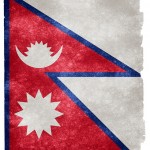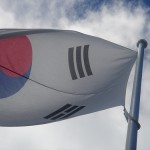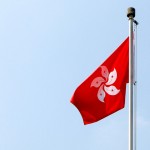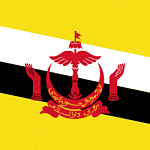Home to the tallest mountain on Earth, Nepal separates the tough from the sissies when they start the vertical journey from Camp 4 onwards. Any self-respecting mountaineer will not have made complete their conquest if they have not reached the summit of Mt. Everest, which, according to one very famous mountaineer, he climbed because “it’s there.”
Mt. Everest and the surrounding staggering scenery known to the non-sherpa world as the Himalayas have been there for a long, long time, but Nepal as a sovereign nation is yet to decide its fate in the upcoming June 2013 Constituent Assembly elections.
Nepal’s public holidays reflect this (messy) state of nationhood as well as the country’s predominant Hindu beliefs. Their calendar (called Bikram Sambat), like their non-conformist two-toothed emblem of a flag, neither starts in January nor count years Anno Domini style. Translated to Gregorian dates, Nepal public holidays schedule 2013 is as follows.
Martyr’s Day – Tuesday, 29 January 2013
On this day, Nepalis remember the martyrs who died fighting for democracy – especially the four most important martyrs who were executed in 1941 – that has long eluded their country. Various memorial services are held across the country to pay tribute before the statues of all known and unknown martyrs who offered their lives fighting against the Rana Dynasty and all other autocratic rulers. A major rally and ceremony is held at the Martyrs’ Memorial Park in Kathmandu on this day, an occasion when key government officials also address the nation on the issue of democracy.
Democracy Day – Monday, 18 February 2013
The Rana Dynasty ruled Nepal for 104 years. It was on this day in 1951 when they were ousted from power. To mark this political shift, the Nepali army sounds the bugle at sunrise and fires cannons atop the Bhimsen tower in Kathmandu. A formal ceremony to commemorate the day is held at the Nepal Army Pavilion and attended by the Prime Minister and other key government officials. Celebration of the Democracy Day, however, has not been consistently observed by the Maoist-led government although the country’s Armed Forces and civilian organizations honor this day with their own version of programs.
Nepali New Year – Sunday, 14 April 2013
The start of the Bikram Sambat calendar is in mid-April. The Nepali New Year week is celebrated for 9 days, with the fifth day from the start of the festivities declared as a public holiday. On the day of Navabarsha or the New Year itself, people perform a ritual of bathing and washing in the Hanumantay River in the belief that the act of dipping in a moving water would drive away all the illnesses of the coming year. Animals are sacrificed on this day to appease the deities, with special homage paid to Lord Bhairav (a manifestation of Shiva) and the Goddess Bhadrakali (Bhairav’s consort, a manifestation of the Hindu goddess Durga). Chariots representing these Hindu deities are paraded around town on the days leading to the first day of the year, an event known as Bisket Jatra. On the New Year’s Day itself, these chariots are symbolically collided to signify the union of the male and female. The promise of fertility symbolizes the start of the year.
Republic Day – Tuesday, 28 May 2013
Nepal has been ruled by monarchs for centuries, but as a republic, it is still in its infancy. This year, Nepal will celebrate its 6th Republic Day which commemorates the overthrow of the 240-year-old monarchy and its eventual replacement by the Constituent Assembly. Military and civilian parades and traditional dances and cultural performances take place in the capital, Kathmandu.
Krishna Janmashtami – Wednesday, 28 August 2013
Hindus celebrate this day as the nativity of Krishna, a major Hindu deity. Devotees celebrate this day by fasting until midnight and keeping vigil by participating in collective “bhajans” (singing of religious hymns) and “slokas” (chants from Bhagavad Gita) in Krishna temples all over the country, particularly the Krishna Mandir in Patan Durbar Square.
Dashain Festival – Saturday to Saturday, 5 to 19 October 2013
Dashain (also Dasain) is the Himalayan equivalent of the Indian subcontinent’s Durga Puja. This festival celebrates the triumph of the Supreme Goddess Durga over the demon Mahishasur and is one of the most important events in Nepal along with Tihar. Dashain is celebrated for 15 days but only the first, eighth, ninth and 10th days are declared as public holidays. Nonetheless, all government offices and educational institutions remain closed on the entire duration of the festival.
Ghatasthapana (1st Day of Dashain) – Saturday, 5 October 2013
On this day, a pot of cow dung sown with barley seeds and poured with holy water is prepared to welcome the goddess Shakti, a manifestation of the goddess Durga, who is said to reside in this “kalash.” A ritual led by a priest is then performed to invoke the blessing of the goddess. Family members (which used to be all-male) take part in a twice-a-day prayer ritual until the seventh day when the seeds will have grown to a bundle of long yellow grass. This grass is known as “jamara.” The “jamara” along with other accoutrements of the ritual collectively known as the “fulpati” are brought to the residence of the Prime Minister for an offering ceremony on the seventh day (which is also important but not listed as a public holiday).
Maha Ashtami ( 8th Day of Dashain) – Saturday, 12 October 2013
This is the day when the most demonic of goddess Durga’s manifestations known as Kali is said to surface. To appease Kali, thousands of animals are slaughtered, and their blood is used to bathe the goddess’ statue in blood. The sacrificial worship goes well until dawn until most of the sacrificial courtyards are ankle-deep in blood. The meat of the slaughtered animals is then taken home, cooked and prepared in small leaf plates, and distributed to the poor.
Nawami (9th Day of Dashain) – Sunday, 13 October 2013
The demon whom the goddess Durga conquered was said to have taken the form of a buffalo which destroyed everything on sight. The army of defeated demons also took the guise of other animals and fowls to be spared from annihilation. On this day, a demon-hunting ceremony is performed by the state in the Hanuman Dhoka Royal Palace courtyard called Kot. Buffalos are slaughtered by the members of the Armed Forces while firing the 21-gun salute. All the others animals and fowls are also killed ritually and their blood are used to bless tools, machines and transport to seek blessing for a more prosperous livelihood and to prevent accidents in the coming year.
Viajaya Dashami (10th Day of Dashain) – Monday, 14 October 2013
On the 10th day of Dashain, younger members of the family seek and receive blessings from their elders in the form of “tika” or the red pigment applied to the forehead. From this day until the end of the festival five days later, families get together to exchange gifts and receive “tika” from elder relatives and senior members of the community. On the 15th day of Dashain, adults play cards to pass the night so they would receive blessings of wealth from the goddess Laxmi who is said to bestow her gifts to those who remain awake.
Tihar Festival – Friday to Tuesday, 1 to 5 November 2013
All of Nepal lights up in grand display of decorative lights and garlands on the occasion of Tihar, or the Nepalese equivalent of Deepavali. Tihar is traditionally celebrated for five days, although only the fourth and fifth day are considered public holidays. The essence of Tihar is sacred animal (important to farming and sacred to Hinduism) and filial worship, and both are carried out in elaborate rituals on appointed days. The first day is dedicated to the worship of crows, harbingers of gloom and death. To appease them, they are offered food and prayers. On the second day of Tihar, dogs (which are said to be the ride of Lord Bhairava, a manifestation of Shiva), are offered prayers, food and garlands. Only when they have eaten first do people take their breakfast. Cows, which are spiritually important in Hinduism, are worshipped on the third day. They are washed, decorated and garlanded, fed and worshipped before breakfast. On this third day of Tihar, houses start to put on decorations of marigold and festive lights to attract the attention of the goddess of wealth and fortune, Laxmi. Young girls sing and dance all night from house to house in exchange for money collected for religious purposes.
Laxmi Puja (Lakshmi Pooja or Fourth Day of Tihar) – Monday, 4 November 2013
The “yuck” factor associated with animal waste is understandable when one looks at it from a Western perspective. But in a country with massive Hindu population regarding cows as sacred animals, anything and everything associated with them are likewise sanctified. On this day, Nepali Hindus consecrate cow dung which is traditionally used to light homes in the form of methane. Oxen, which are important in transporting goods and in farm life in general, are also revered on this day as they are the ride of the Lord Shiva.
Bhai Tika (Fifth Day of Tihar) – Tuesday, 5 November 2013
Filial devotion is ritualized in Nepali culture. On the last day of Tihar, brothers and sisters often travel long distances to reunite on this day. Sisters worship their brothers by offering them garlands they made themselves and asking the gods of death to spare their brothers from danger and instead bless them with long life. Brothers strengthen the bond by offering their sisters gifts and money.
Explore the rest of the world
More from my site
Article by Chris
Chris had a passion to contribute to society especially to fellow travelers like himself. He also had a passion for Southeast Asia and frequently visited. While brainstorming ideas, he decided that a travel blog dedicated to his favorite countries, Thailand and Singapore, could be more beneficial than any guidebook. Only one year later did the blog’s success bring in more writers, more countries, and more readers.
- Google+ |
- More Posts (327)
Help others get the information they need by liking or sharing our page!
Follow @followloveblab
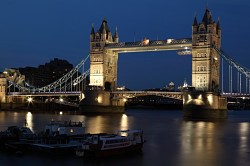 Discover marvelous architecture in London
Discover marvelous architecture in London